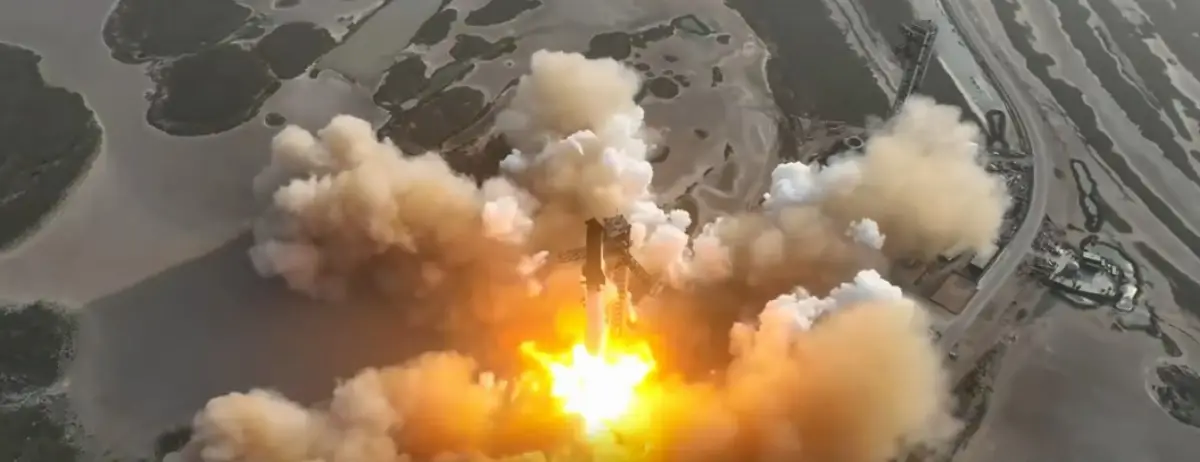
Starship's ninth flight test
Contact with the booster was lost shortly after the start of landing burn

Starship’s payload bay door was unable to open which prevented the deployment of the eight Starlink simulator satellites
Starship’s ninth flight test lifted off at 6:36 pm CT on Tuesday, May 27 from Starbase, Texas. The Super Heavy booster supporting the mission made the first ever reflight in the Starship program, having previously launched on Starship’s seventh flight test in January 2025. The booster performed a full-duration ascent burn with all 33 of its Raptor engines and separated from Starship’s upper stage in a hot-staging maneuver. During separation, Super Heavy performed the first deterministic flip followed by its boostback burn.
Super Heavy demonstrated its ability to fly at a higher angle of attack during its descent back to Earth. By increasing the amount of atmospheric drag on the vehicle, a higher angle of attack results in a slower descent speed which in turn requires less propellant for the initial landing burn. Getting real-world data on how the booster controlled its flight at this higher angle of attack will contribute to improved performance on future vehicles, including the next generation of Super Heavy.
As it approached its designated splashdown area in the Gulf of America, Super Heavy relit its 13 center and middle ring Raptor engines. Contact with the booster was lost shortly after the start of landing burn when it experienced a rapid unscheduled disassembly approximately 6 minutes after launch, bringing an end to the first reflight of a Super Heavy booster.
Following a successful stage separation, the Starship upper stage lit all six of its Raptor engines and performed a full-duration ascent burn. The engines on Starship flew with mitigations in place following learnings from the eighth flight test, including additional preload on key joints, a new nitrogen purge system, and improvements to the propellant drain system.
During Starship’s orbital coast, several in-space objectives were planned, including the first payload deployment from Starship and a relight of a single Raptor engine.
Starship’s payload bay door was unable to open which prevented the deployment of the eight Starlink simulator satellites. A subsequent attitude control error resulted in bypassing the Raptor relight and prevented Starship from getting into the intended position for reentry. Starship then went through an automated safing process to vent the remaining pressure to place the vehicle in the safest condition for reentry. Contact with Starship was lost approximately 46 minutes into the flight, with all debris expected to fall within the planned hazard area in the Indian Ocean.
Its ninth flight test marked a major milestone for reuse with the first flight-proven Super Heavy booster launching from Starbase, and once more returned Starship to space. Data review is underway, and new improvements will be implemented as work begins to prepare the next Starship and Super Heavy vehicles for flight. Developmental testing by definition is unpredictable, but every lesson learned marks progress toward Starship’s goal of enabling life to become multiplanetary.
AVIONEWS - World Aeronautical Press Agency